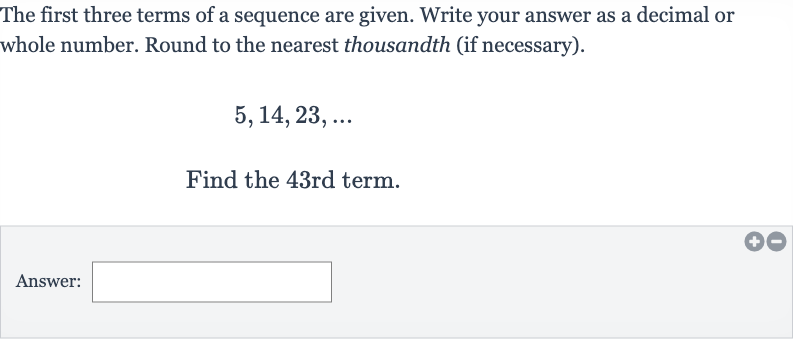AI tutor
Welcome to Bytelearn!
Let’s check out your problem:

The first three terms of a sequence are given. Write your answer as a decimal or whole number. Round to the nearest thousandth (if necessary).Find the rd term.Answer:
Full solution
Q. The first three terms of a sequence are given. Write your answer as a decimal or whole number. Round to the nearest thousandth (if necessary).Find the rd term.Answer:
- Determine Pattern: First, we need to determine the pattern of the sequence. We can do this by finding the difference between consecutive terms.Difference between second and first term: Difference between third and second term:
- Arithmetic Sequence: Since the difference between consecutive terms is constant, we have an arithmetic sequence with a common difference of .
- Formula for nth Term: To find the th term of an arithmetic sequence, we use the formula:
- Calculate rd Term: We are looking for the term, so we plug in the values into the formula: term
- Calculate rd Term: We are looking for the term, so we plug in the values into the formula: term Now we calculate the term: term term term
